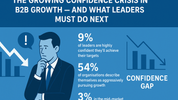Customers are making decisions on how to deal with your organization.
Let's forget for a second the way you might want to sell to them.
This is about buying.
It's not shock to any of us that buyers, will take the route that they want to buy.
We have all looked things up on out mobiles on a Saturday. My point being, that we buy enterprise stuff, or at least do research buying stuff even on non-work days.
Many of us are used to using social media, such as Facebook and our expectations on how systems will work. Our assumption is that systems should have an easy to use user interface, like Facebook.
Many of us are used to using the Uber app for getting a taxi. Out is the standing by the side of the road in the rain hoping to flag a taxi down. Here in London taxis usually only take cash. Uber turns getting a taxi into an frictionless transaction. While I didn't expect every company to have an app, I do expect to be able to buy from companies in such a frictionless way.
So buyers will always try and buy from you in the most easiest way. So what?
If you are not providing clients that easy option then you are missing out. Putting it another way you are leaving money on the table.
So what do you need to do?
1. Provide customers with the content they will need. This isn't corporate content, you know as well as I do that we ignore anything that even looks or smells like a brochure.
The best thing to do is to empower your employees and salespeople to provide and create their own authentic content.
2. For your teams to grow their networks and relationships so that your company is the natural choice for people to buy your product and service.
3. For your sales people and employees to have both a passive presence on social but also an active presence.
When buyers are buying they will find you, consume your content and then will contact you to buy.
This will drive you to digital transformation.
You cannot put this off any longer.
But for the most part, CEOs can no longer wait as the pace of change is accelerating. This puts considerable pressure on enterprise leaders to act quickly and initiate the digital transformation process. But do they really need to create digital workplaces? If an enterprise is working efficiently without the plethora of technologies needed to run a digital workplace, does it really need to change?











